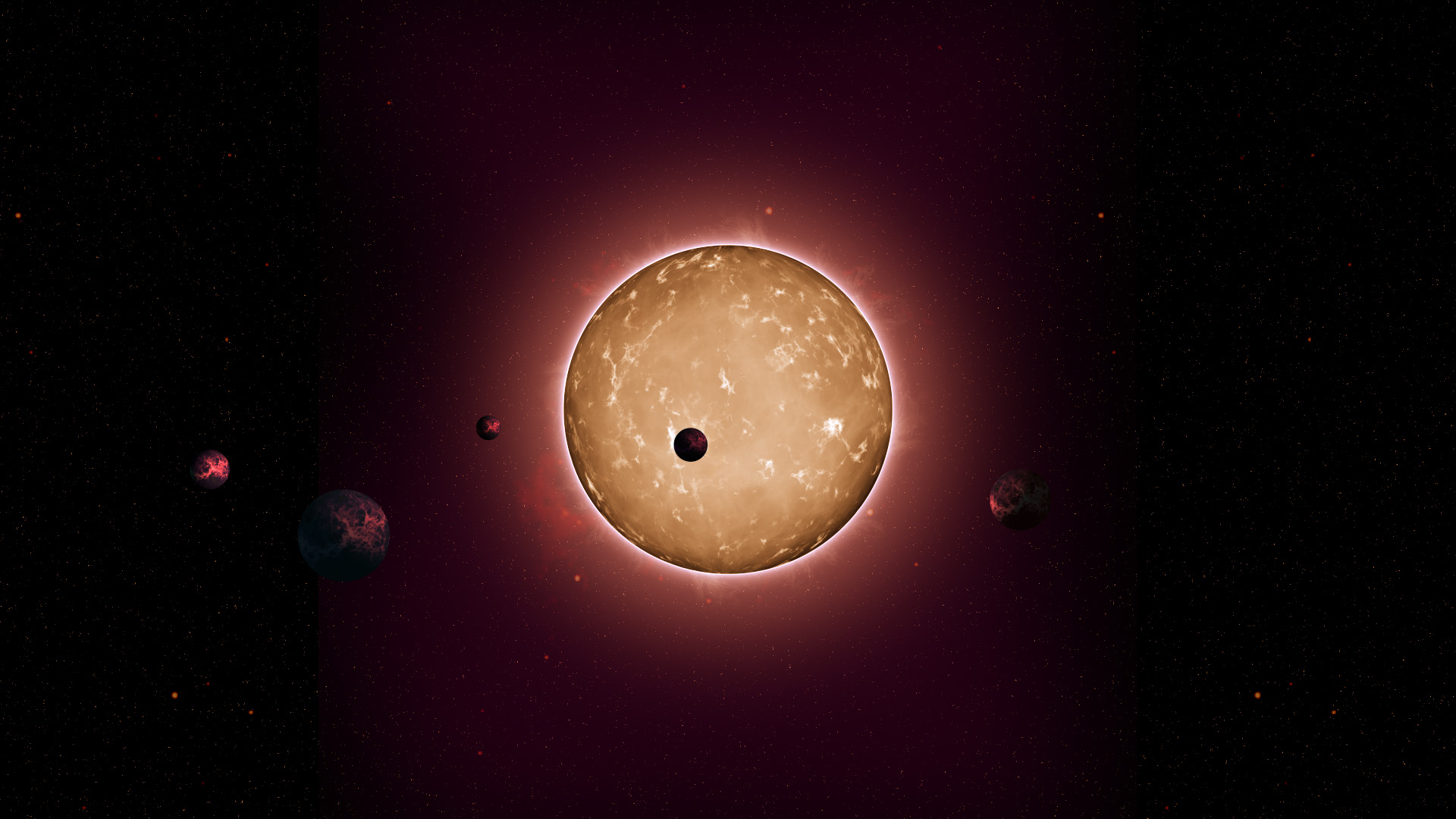Oldest exoplanet system found in the Milky Way
The oldest known planetary system has been discovered around the star Kepler-444. This is the result of calculations of data from the Kepler satellite by scientists including Aarhus astronomers. The discovery has just been published in The Astrophysical Journal.

A group of astronomers strongly represented by researchers at the Stellar Astrophysics Centre, Aarhus University, has made a surprising discovery – a planetary system that is 11.2 billion years old. In other words, it is the oldest system found by astrophysicists to date in the 13.2-billion-year-old Milky Way
The discovery has been made by combining measurements from the Kepler satellite. Kepler measures minute variations in the light from many stars at the same time and over year-long periods, and these intensity variations have successfully been used either to discover exoplanets orbiting the stars or to study the interior of stars with asteroseismological methods. In these newest results both methods have been used fully on the same star-system, allowing us to know the age of the star and the parameters for the five planets orbiting the star.
It is well known that recently formed stars with high metallicities have an abundance of large gas planets. It even seems that high metallicity is a requirement for the forming of gas planets. Rocky planets are quite another matter. They also form around low-metal stars, and with the Kepler-444 results we now know that rocky planets even formed in the very early days of the Milky Way, when all stars were low on metals. This means that there may exist many more rocky planets than hitherto thought, and also that some of them have existed far longer than the Sun. There may be lots of very ancient Earth-like planets out there.
Kepler-444 is relatively close to us, some 117 light years, in the direction of the constellation Lyra. In spite of its closeness, it belongs to a much older population of Milky Way stars in the thick disk, as can be inferred from its orbit. Its metallicity is only 1/3 of that of the Sun, and the age of the star has been determined from asteroseismological data to be some 11.2 (US) billion years, more than twice the age of the Sun.
Kepler-444 is an orange K0V star, some 25% smaller than the Sun, and 700 degrees Celsius cooler on the surface. Five planets are known. One is slightly smaller than Venus, and the rest are slightly smaller than Mars. They all orbit at 1/5 the distance of Mercury to the Sun, making them very hot. Though they probably all are rocky planets, the low metal content of the system makes it unlikely that they have significant magnetic fields. This leaves them exposed to the radiation and stellar wind of the star, and therefore any trace of atmospheres have long ago disappeared.
The existence of such ancient rocky planets makes it more probable that larger planets the size and composition of Earth also exist – with whatever consequences one can imagine on that behalf.
Animated reconstruction of Kepler-444 and its planets
This animation starts by showing us Kepler's field-of-view in the direction of the constellations Cygnus and Lyra. We are next taken to the vicinity of the Kepler-444 planetary system, located some 117 light years away. Kepler-444, the parent star, was formed 11.2 billion years ago when the Universe was less than 20% its current age. This pale yellow-orange star is 25% smaller than the Sun and substantially cooler. We see its five planets transiting in front of the stellar disc. Having sizes between those of Mercury and Venus, they cause a tiny dimming of the light received from the star during transit. The last segment of the animation emphasizes the compactness of this system. The five planets orbit their parent star in less than 10 days or, equivalently, at less than one-tenth Earth's distance from the Sun. In a way, this system may be thought of as a miniature version of the inner planets in our own Solar System.
Find the video here
Credit: Tiago Campante/Peter Devine.
This article was written by Ole J. Knudsen, Stellar Astrophysics Centre (SAC).
More information
Read the full article in the Astrophysical Journal
Read about the Stellar Astrophysics Centre, Aarhus University.
Contact
Professor Hans Kjeldsen
Stellar Astrophysics Centre
Department of Physics and Astronomy
Aarhus University
+45 2338 2160
hans@phys.au.dk
